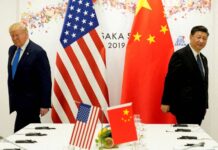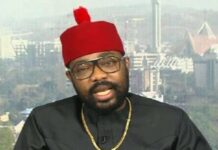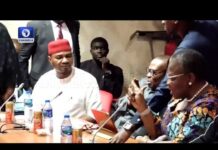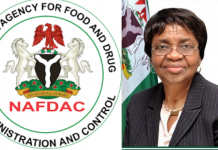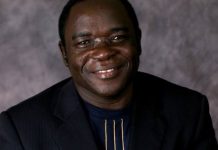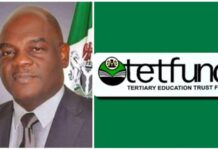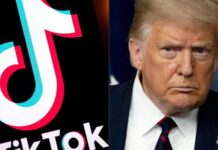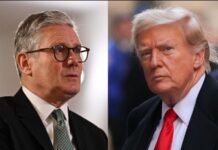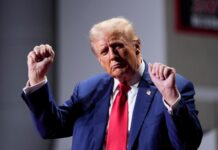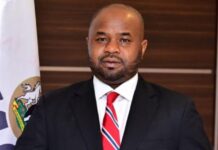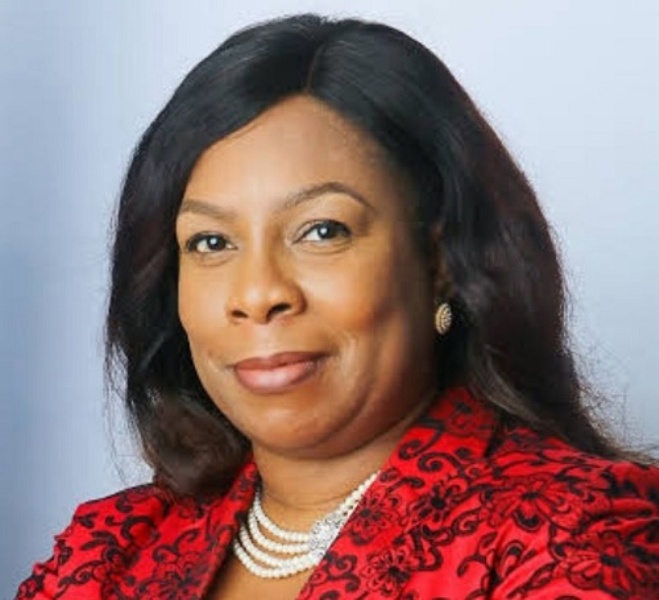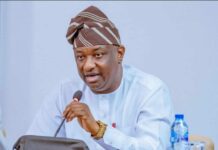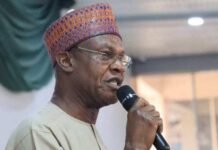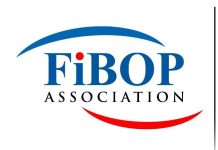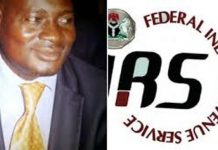The world just witnessed history in the making: A little before 2 pm local time in Singapore, President Donald Trump and North Korean leader Kim Jong Un signed an agreement committing to work together to “build a lasting and stable peace regime on the Korean Peninsula.”
Sitting side by side at a table flanked by alternating US and North Korean flags, Trump and Kim each signed copies of what Trump described as a “very important” and “pretty comprehensive document,” though he declined to elaborate on the details of the agreement at the time.
“We had a historic meeting and decided to leave the past behind and sign a historic document,” Kim told reporters at the signing ceremony, speaking through a translator. “The world will see a major change.”
The signing ceremony, which took place at the Capella hotel on Singapore’s Sentosa Island, was the dramatic climax of a nearly five-hour summit between the two leaders and their top aides.
Shortly after the ceremony, the text of the document was released to journalists covering the summit. The agreement consists of four major points:

*The United States and the DPRK commit to establish new US-DPRK relations in accordance with the desire of the peoples of the two countries for peace and prosperity. (DPRK stands for the Democratic People’s Republic of Korea, the formal name of North Korea.)
*The US and the DPRK will join their efforts to build a lasting and stable peace regime on the Korean Peninsula.
*Reaffirming the April 27, 2018, Panmunjom Declaration, the DPRK commits to work toward the complete denuclearisation of the Korean Peninsula.
*The US and the DPRK commit to recovering POW/MIA remains, including the immediate repatriation of those already identified.
It’s far from a peace treaty or a comprehensive agreement to dismantle North Korea’s nuclear arsenal. Nor does it even clarify what each side means by “denuclearization.”
But it’s still progress.
Less than a year ago, Trump was threatening to rain down “fire and fury like the world has never seen” on North Korea and Kim was calling Trump a “mentally deranged US dotard” and “carefully examining” plans for a missile strike on US military bases in Guam.
But after a day spent talking, laughing, eating, and strolling leisurely with one another, the two men have “developed a very special bond,” according to Trump.
It’s a stunning turn of events. And while it’s just the beginning of what will likely be a long and complicated negotiating process — one that could break down at any time — it’s certainly a positive start.
“We’ll be meeting again a great many times,” Trump said after signing the document. Asked if he plans to invite Kim to the White House, Trump responded, “Absolutely I will.”
The agreement doesn’t appear to contain any firm promises from Pyongyang to abandon its nuclear weapon program, but rather, opens the door to ongoing discussions an analyst said.
In a lengthy solo press conference later, Trump mentioned other topics the leaders apparently discussed, such as ending U.S.-South Korea joint military exercises.
Trump called the document “very important” and “comprehensive,” adding that it would be discussed “at great length.”
“I think both sides are going to be very impressed with the result,” he said during the signing ceremony.
Speaking after Trump, Kim said, “Today we had a historic meeting and decided to leave the past behind. We are about to sign a historic document. The world will see a major change.”
Trump praised Kim as a “worthy negotiator” and talented man who “loves his country very much.” Before they parted ways, he promised that the pair would meet many times and, when asked if he’d extend an invitation for his North Korean counterpart to visit the White House, he said: “Absolutely I will.”
“We have developed a very special bond,” Trump said. “It worked out for both of us far better than anybody could’ve expected, far better than even anybody would’ve even predicted. This is going to lead to more and more and more, and it’s an honor to be with you.”
The president later told reporters during his news conference that he was open to visiting Pyongyang and planned to invite Kim to the White House ― both at the “appropriate time.”
Kim left the Capella Hotel just moments after the declaration was signed and ducked questions from reporters about whether he had spoken about giving up any of the North’s nuclear weapons.
Trump said during the press conference that the two leaders had agreed to engage in “vigorous negotiations to implement the agreement as soon as possible.” When pressed to explain what exactly “complete denuclearization” means or what it would entail, Trump said only that the process would be done as “fast as can be done scientifically [and] mechanically.” He did not provide a concrete timeframe.
He said the U.S. had agreed to stop playing “war games” with Pyongyang, referring to the joint military exercises with South Korea that have angered Kim in the past.
Trump added that he wants to “bring our soldiers back home” from South Korea, but said it was “not part of the equation right now.”
The document signed by the two leaders included no language about human rights protections. When asked about this, Trump said human rights had been covered during the meeting and would be discussed “more in the future.”
Trump told reporters that any denuclearization efforts “will be verified.” When asked how that would be accomplished, however, he replied that it would be “achieved by having a lot of people there … combinations of both” American officials and international representatives.
Disarmament experts have long said any deal with the North should contain firm commitments about what, exactly, “denuclearization” means and how the country would go about it. Secretary of State Mike Pompeo himself on Monday told reporters the “only outcome the United States will accept” was the “complete and verifiable and irreversible denuclearization of the Korean Peninsula.”
The terms “verifiable” and “irreversible” were not in the document that Kim and Trump signed.
Vipin Narang, a professor of international relations at MIT, said the language in the document echoed statements made by North Korea 25 years ago in a similar joint declaration with the U.S. and appears to contain little more than what the North has already promised in the past. He did note, however, that Kim’s first handshake with Trump shows his nuclear weapons have officially given him legitimacy on the world stage.
“Get nukes and you are taken seriously and get to meet with the president of the United States,” Narang said in an email to Huff Post.
Other analysts noted that despite how Trump may speak about the summit going forward (or any new chatter about a Nobel Peace Prize);, the North hasn’t yet made a single promise to disarm.
“A summit is inherently asymmetric, because its very existence confers international recognition to the North Koreans,” Jeffrey Lewis, a nuclear policy expert at Middlebury Institute of International Studies, wrote on Sunday. “Kim Jong Un is desperately looking for international recognition of North Korea as a country in good standing, of his right to rule it, and of the legitimacy of his possession of nuclear weapons. That’s why his motorcade had, not one, but two camera-mounted vehicles.”
He continued: “North Korean propaganda will be living off this summit for a long time.”
Still, North Korea experts have hailed the outcome as a positive one as it suggests a thaw in decades-long tensions between Washington and Pyongyang.
“It was not easy to get here,” Kim said before Tuesday’s talks began. “The past worked as fetters on our limbs, and the old prejudices and practices worked as obstacles on our way forward. But we overcame all of them, and we are here today.”
The highly anticipated summit kicked off a few minutes after 9 a.m. local time with the two world leaders meeting at the steps of Capella Hotel.
“Nice to meet you, Mr. President,” Kim was overheard telling Trump. It marked the first time in history that a North Korean leader was meeting with a sitting U.S. president.
“We’re going to have a great discussion,” Trump said shortly after the two shook hands. “It’s my honor, and we’re going to have a terrific relationship.”
The two leaders first met privately with interpreters, and then with members of their respective delegations. They then had a working lunch (prawn cocktail, Korean stuffed cucumber and beef ribs were on the menu) before taking a quick stroll through the hotel’s grounds.
“I think better than anybody could’ve expected,” Trump told reporters at the time, as Kim smiled beside him. “Top of the line, really good.”
At the press conference, Trump acknowledged that there was much more that needed to be done. “If you don’t get the ball over the goal line, it doesn’t mean enough,” he said.
VOX/HUFFPOST

